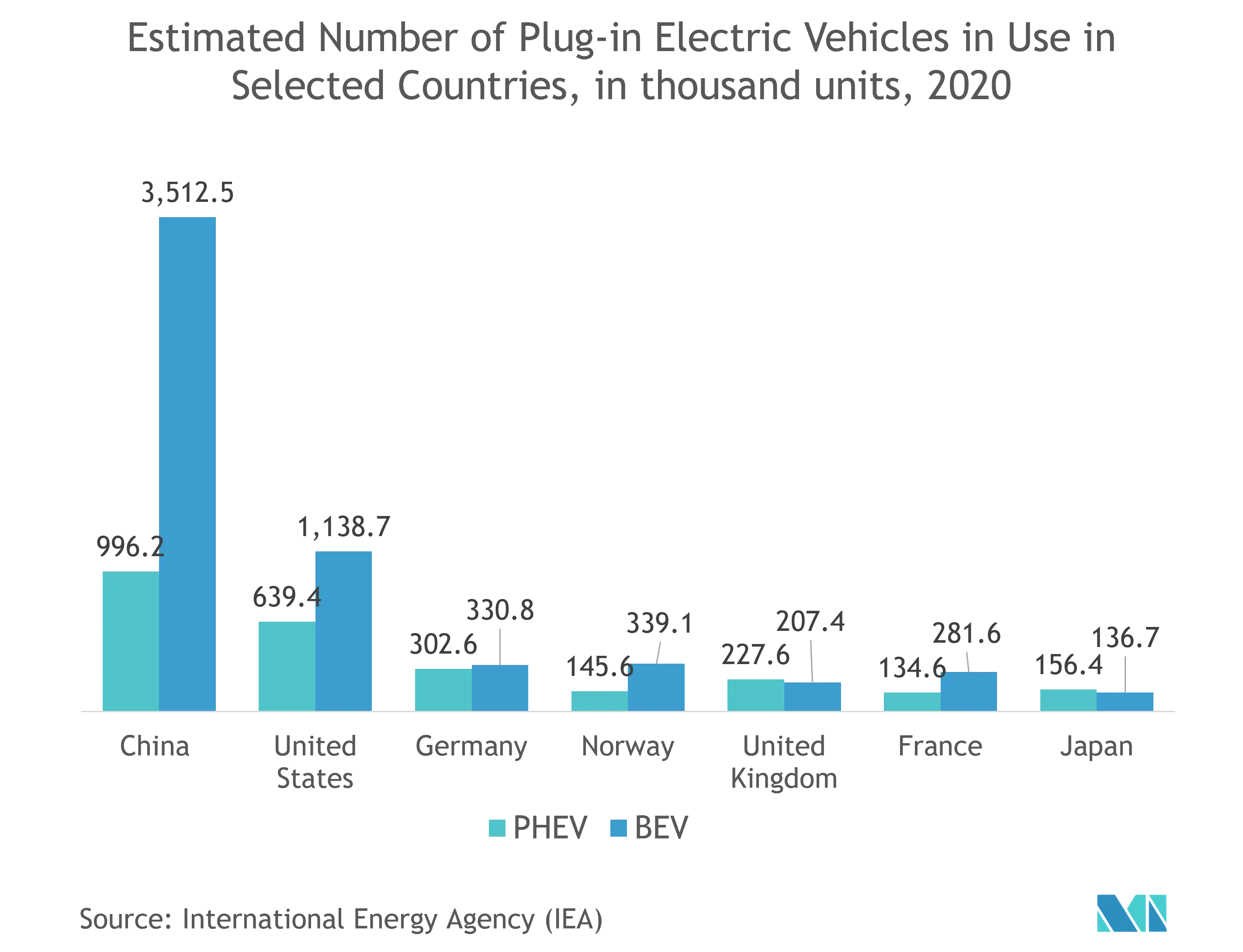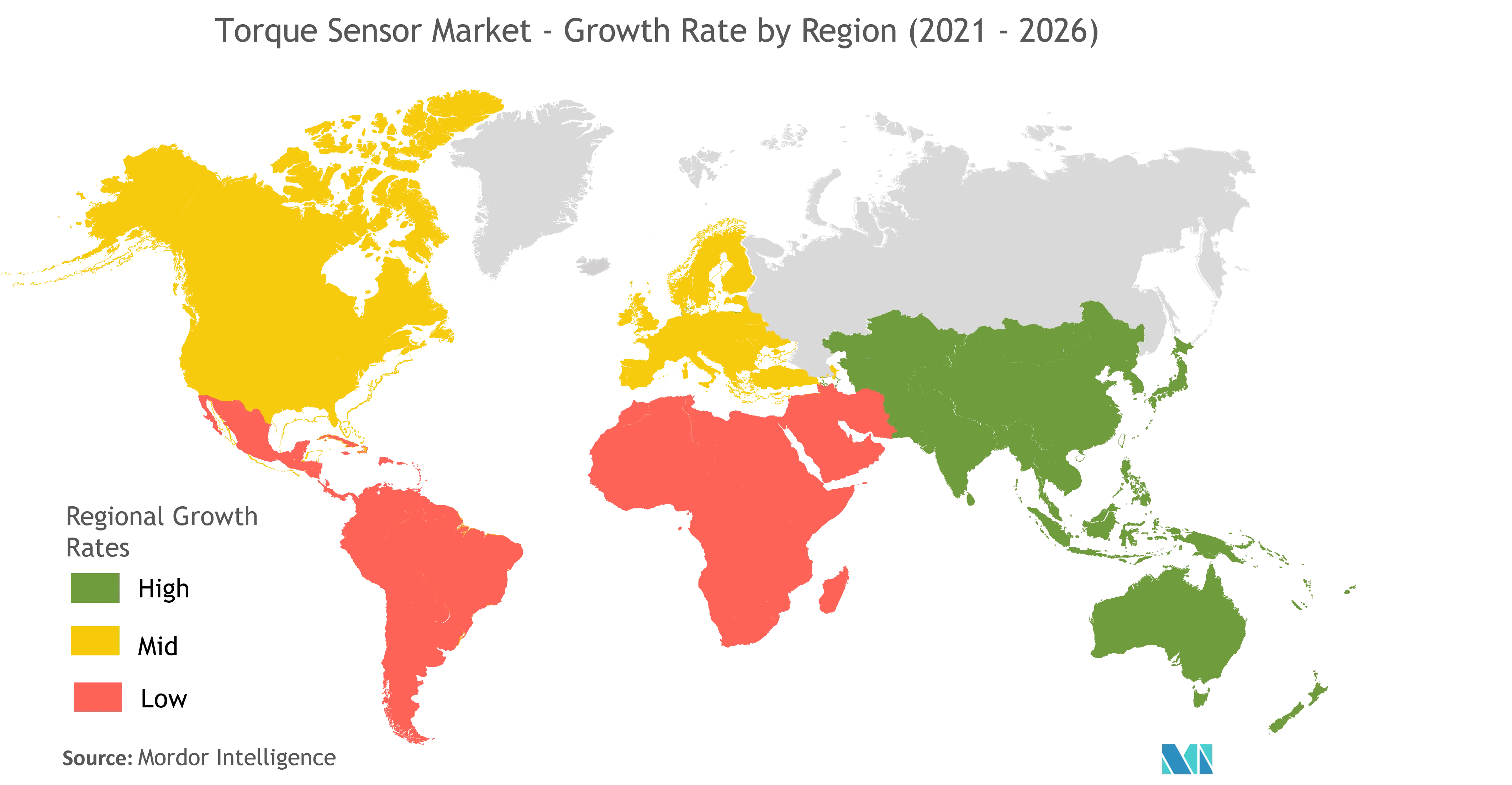Market Trends of Torque Sensor Industry
This section covers the major market trends shaping the Torque Sensor Market according to our research experts:
Automotive Applications Accounts For the Largest Market Share
- Torque sensors have been used in the automotive industry for quite a long time as rotary torque sensors are used for testing gearbox, strain measurement, testing clutch, brake, suspension system, powertrain, and dynamic torque within the engine.
- With the increasing production of the automobile, the market caters a potential growth. Amid the Covid-19 pandemic, the global light vehicle production dropped to around 70 million units in 2020. The automotive market is anticipated to bounce off, reaching the pre-pandemic production volumes around the year 2023. In 2025, it is projected that some 93 million light vehicles might be produced worldwide (source: Schaeffler Gruppe).
- Further, electric vehicles do not require a gearbox or clutch. Still, the engines generate torque used to power a narrow band of engine speed or gears, and also the same torque is also used for acceleration. Thus, drives the need for torques sensors in the market.
- Torque is also involved in the steering wheel rotation, and various developments to enhance the steering wheel are driving multiple opportunities for the company. For instance, in September 2020, Schaeffler partners with Bosch Automotive Steering to introduce and expand the Intelligent mechatronic Rear Wheel Steering system portfolio. The technology will involve collecting data based on the steering wheel torque sensor. The control units are already integrated with the electronic controller calculates to assist in steering for the rider. Also, the torque applied by the driver is calculated as it accounts for several other vehicle parameters. Therefore, such parameters are driving the market growth.
- Moreover, with the increasing demand for automobiles, the manufacturing sectors in the automotive industry is leveraging automation process with advanced robotics. For example, large robots with high payload capabilities and long reach are being used to weld car body panels, while smaller robots are being used to weld subassemblies such as brackets and mounts. Robotic MIG and TIG arc welding positions the torch in the same orientation every cycle. With its repeatable speed and arc gap, ensure every fabrication is welded with the same high standard. Such applications are driving the need for torque sensors in the automotive sector.
- Further, the automotive sector is witnessing huge demand for autonomous vehicles in North America and Europe and driving torque sensors. For instance, Tesla uses a torque sensor for the steering wheel to determine if drivers are paying attention to the steering. Many drivers in the region have been publicly documented for hacking the systems to stay hands-free. Such developments enable the automotive vendors to ensure safety on the roads.

Asia Pacific is Expected to Account For Significant Market Share
- Countries such as Japan, South Korea, China, and India are rapidly transforming their manufacturing sector with automated equipment to increase production efficiency and meet the industry needs. Moreover, the industrial automation and robotic industry are witnessing the growing adoption of rotary torque sensors, which is, in turn, driving the market.
- Its automotive sector majorly dominates the demand for torque sensors in India. According to Catapult Organizations report 2021, electric vehicles (EVs) currently account for less than 1% of total vehicle sales in India; the market is increasing and is expected to be worth around at least GBP 4.8 billion (INR 475 billion) by 2025. However, two-wheelers account for the largest share of this market at 62%, followed by three-wheelers at 37%. Further, the favoring government policies and heavy investments from automakers are expected to spike the demand for torque sensors for the automotive industry in India.
- On the other hand, according to Hennessy Funds, Japan is the global leader in producing robots and factory automation systems and holds 30% of the worldwide market share. Further, the global demand for industrial robots is growing at 46% annually, and the global robotics market is estimated to reach USD 248.5 billion by 2025. Such figures depict the rising demand for torque solutions in the industrial automation sector, with Japan being the primary aggregator in the market.
- In 2020, China’s industrial robotics market grew by 9.5%, further indicating increased demand for torque sensors. Moreover, the Chinese government aims to double domestic companies’ market share from 30-40% to 70% by 2025, according to the country’s five-year plan approved earlier in the year 2021.
- Moreover, Leading Chinese industrial robot maker Youibot generated USD 15.5 million in its latest funding round led by SoftBank Ventures in May. The Shenzhen-based startup also had a full year in 2020, completing multiple financing rounds and winning several awards for its ingenuity.
- Further, several companies are taking strategic measures to tap into the rising demand for torque solutions in the market. For instance, In July 2020, NSK Ltd. has developed a non-contact torque sensor capable of measuring the torque of drive shafts in vehicles in real-time. This is the first sensor in the world of this type and capability. This new technology can increase fuel economy (reduce power consumption), improve ride comfort and safety, and open up a world of new possibilities across CASE.


